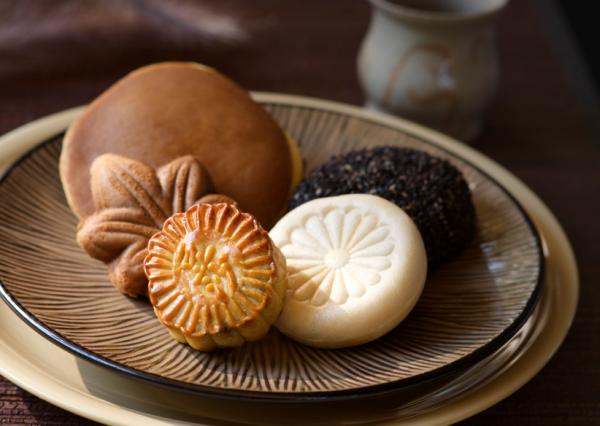Simpler living encompasses not only day to day living, but also expressing oneself in some very basic, traditional and creative ways. The following article clearly describes our human urge to create....and what is more simple than to live how our ancestors lived? (Just another excuse for me so spend my days weavings!)
http://www.marksdailyapple.com/handicraft-the-ancient-tradition-of-creating-things-with-your-hands/#axzz3EWhnrFlc

Anyone who’s spent significant time creating with their hands – whether it be painting, carpentry, knitting, carving, building – can appreciate the distinctive satisfaction it evokes. (I’m using the term broadly.) Handicraft, as wide a spectrum as it can encompass, isn’t about routine chores or fix-its. There’s a difference between grudgingly doing your own home repairs to save money and savoring the experience of meticulously renovating your own home. It’s about the love of the craft on some level. Not everyone would put it in those specific terms, but the people I know who practice handicraft acknowledge they’re drawn to what they do on some subconscious level. Picking up a familiar tool feels comfortable, even calming. The balance of its weight in your hand feels sure. Spending an hour at one’s own workspace (e.g. basement studio, garage workbench), however plain or disheveled, feels like time in a secluded oasis. It’s in the craft that you find focus –
flow even. The brush or needles, chisel or knife, spade or hammer become an unconscious extension of self. The mind devises, but the hand itself thinks, designs, knows. In its fullness, we lose ourselves in the full physical experience of craft – in the sensory nuances, in the emotional associations, in the intuitive energy. I’d venture we’re the happier and healthier for these endeavors.
We live in a society enamored by
passive entertainment and increasingly invested in the virtual experience. Fewer of us have jobs that show us the tangible results of our efforts. Rarer still are full claim on a project or creative license in our work. It leaves a gap, I think, in how we live – in how we exercise the innate physical and creative abilities that make us human.
Although we tend to think of our pre-Neolithic ancestors as living a life stuck in the dirt with no sense of the arts or any other “refinement,” we’re far off course in that assumption. Artistry is indeed an anthropological indicator of modern behavior, but evidence of these inclinations date back tens of thousands of years before the Agricultural Revolution. Our Paleolithic ancestors were creating jewelry from eggshells and bone fragments. They were sewing clothes with animal sinew. They formed vessels and wove baskets. They created paints and dyes. They chiseled spear heads from metal so brittle few of us can even imagine the deftness required. They meticulously whittled shafts for the most aerodynamic, accurate spears. They designed vast stretches of nuanced cave art.
Artistry then was usable if not practical. Today, Western society has largely segregated art to an aesthetic corner. It may represent life but doesn’t intersect much with it. However, individuals still practice crafts handed down to them by family or community members. Likewise, many traditional societies continue to pass down the art forms and crafts as “collective wisdom” that help define their distinctive cultures.
A recent study (
PDF) conducted by the University of California Davis Center for Reducing Health Disparities recently highlighted “the link between traditional artistic practices and mental and physical health.” Although examining such an association isn’t a simple or clear cut task with the methods of standard research, interviews suggested
traditional handicraft bears positive impact on measures like “interconnected mind-body awareness,” “spiritual and emotional growth; physical vigor; strengthening of personal and community identity; and mitigation of historical trauma” as well as therapeutic “distraction from illness” and “enhanced respect for elders.”
Dr. Sergio Aguilar-Gaxiola, director of the Center for Reducing Health Disparities, explains that several “protective factors” are at work here. The practice of traditional arts, particularly as they’re handed down within a cultural community, affirms “intergenerational involvement” and “community engagement.” As Amy Kitchener, executive director of the Alliance for California Traditional Arts,
notes, cultural practices are “embedded in everyday life, in ceremonies and family rites of passage” for many traditional groups and have long played a meaningful role in the concept of personal wellness.
According to the researchers, traditional handiwork also enhances more individual-based factors like “resilience” and “self-efficacy.”
The study, I think, underscores far more than the power of acculturation. Many of us partake in handicraft arts with only personal interest or perhaps familial, but not necessarily cultural affiliations. Nonetheless, there’s still a gratification that comes from its connection with tradition. We understand that we’re one in a long line of individuals who have practiced the art for decades, centuries, even millennia.
The urge to create – what is useful and tangible – is deeply human. There’s something about it that releases
stress and brings us back to center.
We develop a reverence for the craft and even a relationship with the tools themselves. They can become more personal than the items we build or create. For those of us who know or have known a craftsman/woman, we honor that association. We pass many things on through the generations. What means the most, however, are the things that our forebears used and made. A decorative item reminds us of a great-grandparent’s home, but a tool or even a baking pan that we saw a grandparent use over the years makes us absorb his/her very presence. We see the years and feel his/her hands in the wear of the item. Likewise, in the creations they made, we preserve a glimpse of their creativity, a parcel of their lifetime. In our own arts, we enjoy and undoubtedly share the same.
Read more: http://www.marksdailyapple.com/handicraft-the-ancient-tradition-of-creating-things-with-your-hands/#ixzz3EWk41aMq





 Anyone who’s spent significant time creating with their hands – whether it be painting, carpentry, knitting, carving, building – can appreciate the distinctive satisfaction it evokes. (I’m using the term broadly.) Handicraft, as wide a spectrum as it can encompass, isn’t about routine chores or fix-its. There’s a difference between grudgingly doing your own home repairs to save money and savoring the experience of meticulously renovating your own home. It’s about the love of the craft on some level. Not everyone would put it in those specific terms, but the people I know who practice handicraft acknowledge they’re drawn to what they do on some subconscious level. Picking up a familiar tool feels comfortable, even calming. The balance of its weight in your hand feels sure. Spending an hour at one’s own workspace (e.g. basement studio, garage workbench), however plain or disheveled, feels like time in a secluded oasis. It’s in the craft that you find focus –
Anyone who’s spent significant time creating with their hands – whether it be painting, carpentry, knitting, carving, building – can appreciate the distinctive satisfaction it evokes. (I’m using the term broadly.) Handicraft, as wide a spectrum as it can encompass, isn’t about routine chores or fix-its. There’s a difference between grudgingly doing your own home repairs to save money and savoring the experience of meticulously renovating your own home. It’s about the love of the craft on some level. Not everyone would put it in those specific terms, but the people I know who practice handicraft acknowledge they’re drawn to what they do on some subconscious level. Picking up a familiar tool feels comfortable, even calming. The balance of its weight in your hand feels sure. Spending an hour at one’s own workspace (e.g. basement studio, garage workbench), however plain or disheveled, feels like time in a secluded oasis. It’s in the craft that you find focus – 








1. Cassettes -- gone in all cars but used ones
2. PDAs - The concept is still there, but now assimilated into smart phones
3. Paid email - Gone
4. Dial-up - Almost gone
5. Film development - Virtually gone
6. Movie rental stores - While many are going bankrupt, but will be around for a while (especially for non-techies). I given then 10 more years (OnDemand TV is still not enough, downloading to computers is still to non-TV for many)
7. Maps - Still used outside the US, if smart phones kill GPS, they will still be used (try getting interactive maps on your smart phone when you are out of coverage). If GPS evolves form factor and smart phone integration, maps will die
8. Newspaper classifieds - Still on life support (at much cost) probably about 10 more years until complete death
9. Landline - It will take 20 years for complete death. We need more broadband penetration and VoIP that is as easy for SMBs to setup (and as trusted from reliability and fraud perspective) as landlines (http://lpoint.me/gau1vQ)
10. LD Charges - Going out with the landline, albeit faster on a revenue rate thanks to VoIP and mobile
11. Payphones - Almost gone
12. VCRs - We will soon see on 'Antiques Roadshow' "This was one of the original TOP-LOADING VCRs..."
13. Fax machines - Being assimilated. The concept is still around in many SMBs. Check many doctor's offices
14. Phonebooks, dictionaries, etc. - Dying. It will be interesting to see which stop printing entirely
15. Calling 411 - Telco fees vs. smartphone simplicity = swift death
16. CDs - Almost gone
17. Backing Up to Floppies - Not even possible on most PCs
18. Bills in the mail - We will have this for 20-30 more years. Both businesses and all generations of people need to make the change. We are not there yet
19. Buttons - The end is beginning.
20. Losing touch - I think you will see people pull-back from sharing due to privacy concerns and use social to keep a connection (but other ways to truly connect). I am already seeing 10x more people using privacy filters on social than I did 12 months ago.
21. Boundaries - Yes and no -- Egypt just showed both. Try surfing the net in Saudi
22. Paper - This will be around a long, long time. Electronics are simply not easy enough to use yet and still not trusted. Look at medicine (even eClinical has paper as he primary source for all drug discovery info). Tablets will lead the way, by enabling "Augmented Paper" It will be fun to be apart of this (http://lpoint.me/ffoe3o)
Great article. Good food for thought.